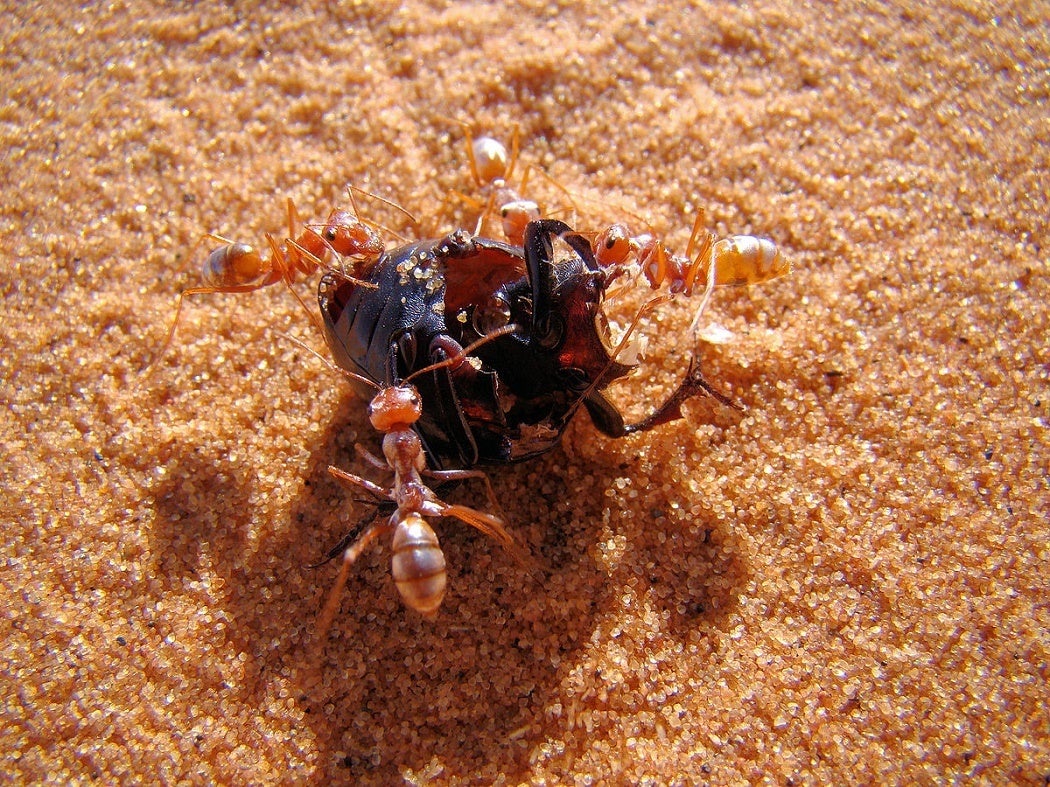Life in the desert is never easy, but one ant has evolved a novel survival strategy. The silver ant, native to the Sahara desert, has a coat of tightly woven hairs that reflect radiation, particularly visible light spectrums and in spectrums close to the infrared. They use this built in heat shield to forage outside the safety of their underground nests at the heat of the day, when temperatures can reach 158 degrees. Nothing else is stirring under those conditions, so the ants have their pick of dead insects to scavenge, all while avoiding hungry lizards. It’s a fascinating adaptation to life in searing heat and dryness. What are some other examples of extreme desert living?
The ants are not alone in finding a way to cope with high daytime temperatures. While other animals in southern Africa are snug in their burrows, the cape ground squirrel is out and about. When shade is at a premium, the cape ground squirrel never leaves home without its trusty parasol tail. By spreading it’s tail in the air and turning it’s back to the sun, the squirrel can forage in the open for long periods during the day despite the baking heat of its Kalahari home. Parasol notwithstanding, the squirrels still retreat to their cool burrows while the sun is hottest. They’re not idiots.
Heat, however, is only one issue that animals of the deep desert must contend with. Lack of water poses numerous problems. Virtually all desert animals have mechanisms for storing or conserving their body’s water, but the thorny devil might have the most creative approach, as well as the coolest Latin name Moloch horridus. These lizards, native to the scrub deserts of central and western Australia, can absorb water through their skin like “blotting paper. ” This ability stem from a network of capillaries in thin channels below the scales. This system allows the lizard to absorb water quickly from the infrequent rains, or even soak it in from damp sand. All the while, the system prevents evaporative water loss through the skin—it’s a one-way blotter. Some of the capillaries transport water directly to the lizard’s mouth so it can drink. Sort of like the reptilian version of the Foam Dome.
These are just a few of the amazing adaptations that have evolved to carve a niche out of such unforgiving environments. It’s hard to imagine anything surviving deep in Earth’s great deserts but there is a hidden world going about its business. From Australia to the Atacama, life has the means—improbable and marvelous— to cope. Let’s salute the industrious silver ants, and marvel at evolution’s ingenuity.







